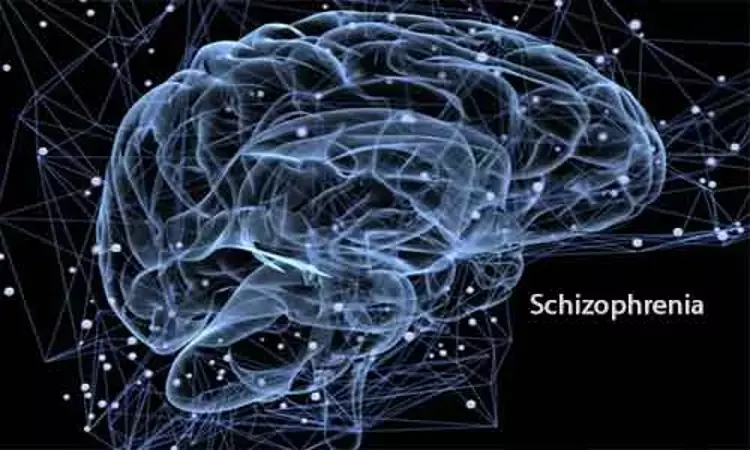- Home
- Medical news & Guidelines
- Anesthesiology
- Cardiology and CTVS
- Critical Care
- Dentistry
- Dermatology
- Diabetes and Endocrinology
- ENT
- Gastroenterology
- Medicine
- Nephrology
- Neurology
- Obstretics-Gynaecology
- Oncology
- Ophthalmology
- Orthopaedics
- Pediatrics-Neonatology
- Psychiatry
- Pulmonology
- Radiology
- Surgery
- Urology
- Laboratory Medicine
- Diet
- Nursing
- Paramedical
- Physiotherapy
- Health news
- Fact Check
- Bone Health Fact Check
- Brain Health Fact Check
- Cancer Related Fact Check
- Child Care Fact Check
- Dental and oral health fact check
- Diabetes and metabolic health fact check
- Diet and Nutrition Fact Check
- Eye and ENT Care Fact Check
- Fitness fact check
- Gut health fact check
- Heart health fact check
- Kidney health fact check
- Medical education fact check
- Men's health fact check
- Respiratory fact check
- Skin and hair care fact check
- Vaccine and Immunization fact check
- Women's health fact check
- AYUSH
- State News
- Andaman and Nicobar Islands
- Andhra Pradesh
- Arunachal Pradesh
- Assam
- Bihar
- Chandigarh
- Chattisgarh
- Dadra and Nagar Haveli
- Daman and Diu
- Delhi
- Goa
- Gujarat
- Haryana
- Himachal Pradesh
- Jammu & Kashmir
- Jharkhand
- Karnataka
- Kerala
- Ladakh
- Lakshadweep
- Madhya Pradesh
- Maharashtra
- Manipur
- Meghalaya
- Mizoram
- Nagaland
- Odisha
- Puducherry
- Punjab
- Rajasthan
- Sikkim
- Tamil Nadu
- Telangana
- Tripura
- Uttar Pradesh
- Uttrakhand
- West Bengal
- Medical Education
- Industry
Excitatory brain stimulation remarkably improves negative schizophrenia symptoms, JAMA study.

Very few therapeutic options are considered effective for negative symptoms in schizophrenia have a detrimental impact on functional outcomes and quality of life in people with schizophrenia which have a detrimental impact on functional outcomes and quality of life. In this regard, a recent network meta-analysis published in JAMA Psychiatry has found that excitatory noninvasive brain stimulation (NIBS) protocols over the left dorsolateral prefrontal cortex are associated with significantly large improvements in the severity of negative symptoms.
Although antipsychotic drugs are relatively effective in mitigating positive symptoms of schizophrenia, their efficacy is limited for the treatment of the negative symptoms of the illness. Evidence indicates that the negative symptoms play a key detrimental role in overall disability and quality of life of people with schizophrenia.
Noninvasive brain stimulation (NIBS), such as transcranial direct current stimulation (tDCS) or repetitive transcranial magnetic stimulation (rTMS), exerts various effects on the brain. Studies have suggested that NIBS helps manage neuropsychiatric diseases or modulate cognitive function. But studies conducted on schizophrenia patients have not yielded any conclusive benefit in this regard with NIBS.
Thus, a frequentist model network meta-analysis was conducted to assess the pooled findings of trials that evaluated the efficacy of repetitive transcranial magnetic stimulation (rTMS), theta-burst stimulation, transcranial random noise stimulation, transcutaneous vagus nerve stimulation, and transcranial direct current stimulation on negative symptoms in schizophrenia. Randomized clinical trials (RCTs) examining NIBS interventions for participants with schizophrenia were included.
The coprimary outcomes were changes in the severity of negative symptoms and acceptability (ie, dropout rates owing to any reason). Secondary outcomes were changes in positive and depressive symptoms.
It was found that the excitatory NIBS strategies over the left dorsolateral prefrontal cortex with/without other inhibitory stimulation in the contralateral brain regions were associated with significantly larger reductions in negative symptoms than sham control.
Of the excitatory NIBS, tRNS (hd-tRNS-AF3AF4F2F6FC4) was associated with the greatest alleviation of negative symptoms. This is a newly developed NIBS technique in which the current is delivered at randomly alternating intensities and frequencies and is believed to induce random neural activity, resulting in neural noise effects.
The application of tRNS has been revealed to be effective in different cortical dysfunction diseases, such as tinnitus with unknown origin. In a head-to-head trial, tRNS was revealed to be superior to tDCS at modulating neural activity after a single stimulation session. This superiority was also identified in the present network meta-analysis, in which tRNS stimulation was ranked superior to tDCS strategies in relieving negative symptom severity.
These findings might serve as a starting point for future large-scale RCTs with longer follow-up periods and sham control to investigate the association between NIBS and negative symptoms in schizophrenia.
Source: JAMA Psychiatry: doi:10.1001/jamapsychiatry.2022.1513
M.B.B.S, M.D. Psychiatry
M.B.B.S, M.D. Psychiatry (Teerthanker Mahavir University, U.P.) Currently working as Senior Resident in Department of Psychiatry, Institute of Human Behaviour and Allied Sciences (IHBAS) Dilshad Garden, New Delhi. Actively involved in various research activities of the department.
Dr Kamal Kant Kohli-MBBS, DTCD- a chest specialist with more than 30 years of practice and a flair for writing clinical articles, Dr Kamal Kant Kohli joined Medical Dialogues as a Chief Editor of Medical News. Besides writing articles, as an editor, he proofreads and verifies all the medical content published on Medical Dialogues including those coming from journals, studies,medical conferences,guidelines etc. Email: drkohli@medicaldialogues.in. Contact no. 011-43720751


